
Modesty in medical settings refers to the practices and equipment used to preserve patient modesty in medical examination and clinics.

Modesty in medical settings refers to the practices and equipment used to preserve patient modesty in medical examination and clinics.
Prior to the invention of the stethoscope, a physician who wanted to perform auscultation to listen to heart sounds or noise inside a body would have to physically place their ear against the body of the person being examined. [1] In 1816, male physician René Laennec invented the stethoscope as a way to respect the modesty of a female patient, as it would have been awkward for him to put his ear on her chest. [1]
Hospital gowns increase modesty as compared to the patient presenting nude, but in the past have been odd clothing which exposes the body. [2] Some contemporary changes to the design of hospital gowns are proposed. [2]
In places with more cultural diversity it becomes more likely that people will make new and different requests for modesty in health care. [3]
Sometimes women do not access healthcare because of modesty concerns. [4]
Muslims in non-Muslim societies sometimes make requests for modesty. [5] [6]

René-Théophile-Hyacinthe Laennec was a French physician and musician. His skill of carving his own wooden flutes led him to invent the stethoscope in 1816, while working at the Hôpital Necker. He pioneered its usage in diagnosing various chest conditions. He became a lecturer at the Collège de France in 1822 and professor of medicine in 1823. His final appointments were that of head of the medical clinic at the Hôpital de la Charité and professor at the Collège de France. He died of tuberculosis in 1826 at the age of 45.

The stethoscope is an acoustic medical device for auscultation, or listening to internal sounds of an animal or human body. It typically has a small disc-shaped resonator that is placed against the skin, and one or two tubes connected to two earpieces. A stethoscope can be used to listen to the sounds made by the heart, lungs or intestines, as well as blood flow in arteries and veins. In combination with a manual sphygmomanometer, it is commonly used when measuring blood pressure.

A do-not-resuscitate order (DNR), also known as no code or allow natural death, is a legal order, written or oral depending on country, indicating that a person does not want to receive cardiopulmonary resuscitation (CPR) if that person's heart stops beating. Sometimes it also prevents other medical interventions. The legal status and processes surrounding DNR orders vary from country to country. Most commonly, the order is placed by a physician based on a combination of medical judgement and patient wishes and values.
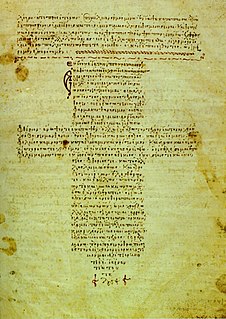
Medical ethics is an applied branch of ethics which analyzes the practice of clinical medicine and related scientific research. Medical ethics is based on a set of values that professionals can refer to in the case of any confusion or conflict. These values include the respect for autonomy, non-maleficence, beneficence, and justice. Such tenets may allow doctors, care providers, and families to create a treatment plan and work towards the same common goal. It is important to note that these four values are not ranked in order of importance or relevance and that they all encompass values pertaining to medical ethics. However, a conflict may arise leading to the need for hierarchy in an ethical system, such that some moral elements overrule others with the purpose of applying the best moral judgement to a difficult medical situation.
Crackles are the clicking, rattling, or crackling noises that may be made by one or both lungs of a human with a respiratory disease during inhalation. They are usually heard only with a stethoscope. Pulmonary crackles are abnormal breath sounds that were formerly referred to as rales.

Auscultation is listening to the internal sounds of the body, usually using a stethoscope. Auscultation is performed for the purposes of examining the circulatory and respiratory systems, as well as the alimentary canal.

In a physical examination, medical examination, or clinical examination, a medical practitioner examines a patient for any possible medical signs or symptoms of a medical condition. It generally consists of a series of questions about the patient's medical history followed by an examination based on the reported symptoms. Together, the medical history and the physical examination help to determine a diagnosis and devise the treatment plan. This data then becomes part of the medical record.

Josef Leopold Auenbrugger or Avenbrugger, also known as Leopold von Auenbrugger, was the Austrian physician who invented percussion as a diagnostic technique. On the strength of this discovery, he is considered one of the founders of modern medicine.
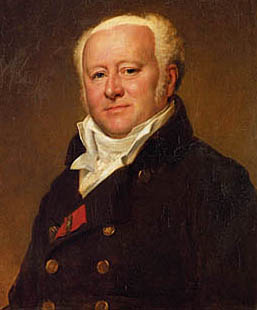
Jean-Nicolas Corvisart-Desmarets was a French physician.

Vital signs are a group of the four to six most important medical signs that indicate the status of the body’s vital (life-sustaining) functions. These measurements are taken to help assess the general physical health of a person, give clues to possible diseases, and show progress toward recovery. The normal ranges for a person’s vital signs vary with age, weight, gender, and overall health.

Pneumomediastinum is pneumatosis in the mediastinum. First described in 1819 by René Laennec, the condition can result from physical trauma or other situations that lead to air escaping from the lungs, airways, or bowel into the chest cavity.
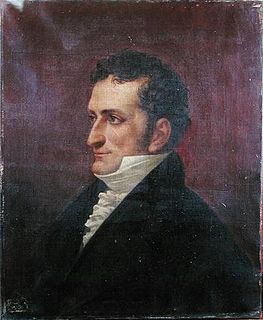
Jean Marc Gaspard Itard was a French physician born in Provence.
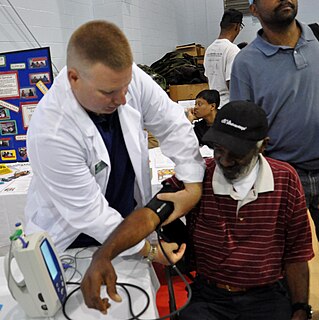
Homeless dumping or patient dumping is the practice of hospitals and emergency services inappropriately releasing homeless or indigent patients to public hospitals or on the streets instead of placing them with a homeless shelter or retaining them, especially when they may require expensive medical care with minimal government reimbursement from Medicaid or Medicare. The term homeless dumping has been used since the late 19th century and resurfaced throughout the 20th century alongside legislation and policy changes aimed at addressing the issue. Studies of the issue have indicated mixed results from the United States' policy interventions and have proposed varying ideas to remedy the problem.

The Necker–Enfants Malades Hospital is a French teaching hospital in the 15th arrondissement of Paris. It is a hospital of the Assistance Publique – Hôpitaux de Paris group and is affiliated to the University of Paris Descartes. Necker–Enfants Malades Hospital was created in 1920 by the merger of Necker Hospital, which was founded in 1778 by Suzanne Necker, with the physically contiguous Sick Children's Hospital, the oldest children's hospital in the Western world, founded in 1801.
Since the invention of the stethoscope by René-Théophile-Hyacinthe Laennec France in 1816, physicians have been utilizing lung sounds to diagnose various chest conditions. Today auscultation provides physicians with extensive information on the examination of the patient. The skills of the examiner however, vary, as seen in a clinical study that was conducted on the diagnosis of pneumonia in 2004.
Clinical peer review, also known as medical peer review is the process by which health care professionals, including those in nursing and pharmacy, evaluate each other's clinical performance. A discipline-specific process may be referenced accordingly.

Charles James Blasius Williams was an English physician. He was an early adopter of new techniques of physical examination, and became known as a specialist in diseases of the chest.
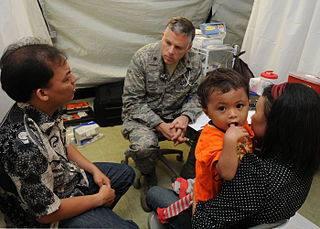
Cultural competence in healthcare refers to the ability for healthcare professionals to demonstrate cultural competence toward patients with diverse values, beliefs, and feelings. This process includes consideration of the individual social, cultural, and psychological needs of patients for effective cross-cultural communication with their health care providers. The goal of cultural competence in health care is to reduce health disparities and to provide optimal care to patients regardless of their race, gender, ethnic background, native languages spoken, and religious or cultural beliefs. Cultural competency training is important in health care fields where human interaction is common, including medicine, nursing, allied health, mental health, social work, pharmacy, oral health, and public health fields.
Undertreatment of pain is the absence of pain management therapy for a person in pain when treatment is indicated.
The history of medicine in France focuses on how the medical profession and medical institutions in France have changed over time. Early medicine in France was defined by, and administered by, the Catholic church. Medicine and care were one of the many charitable ventures of the church. During the era of the French Revolution, new ideas took hold within the world of medicine and medicine was made more scientific and the hospitals were made more medical. Paris Medicine is a term defining the series of changes to the hospital and care received with a hospital that occurred during the period of the French Revolution. Ideas from the Enlightenment and Scientific Revolution were introduced into the medical field.